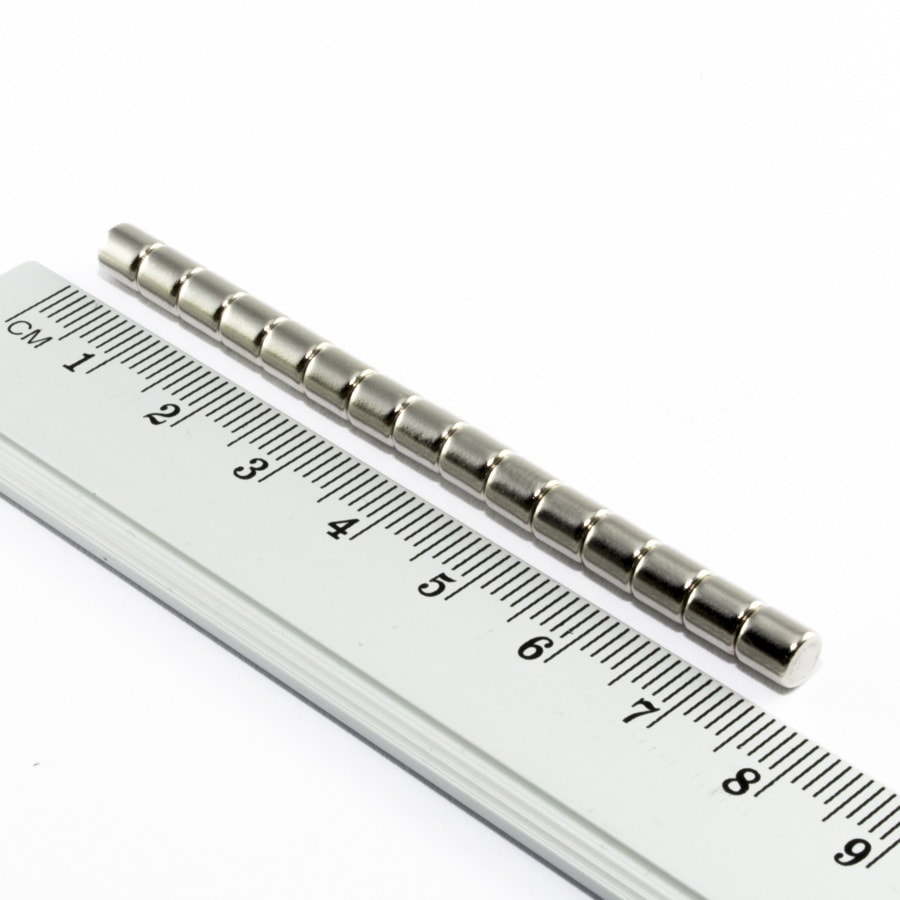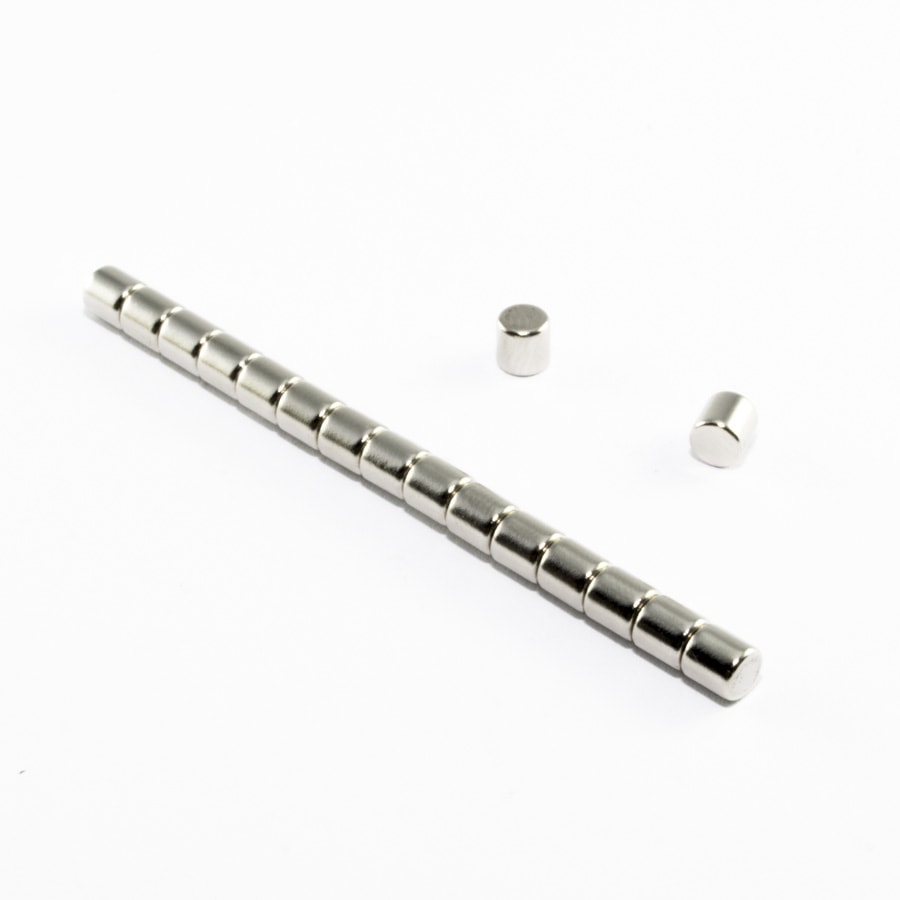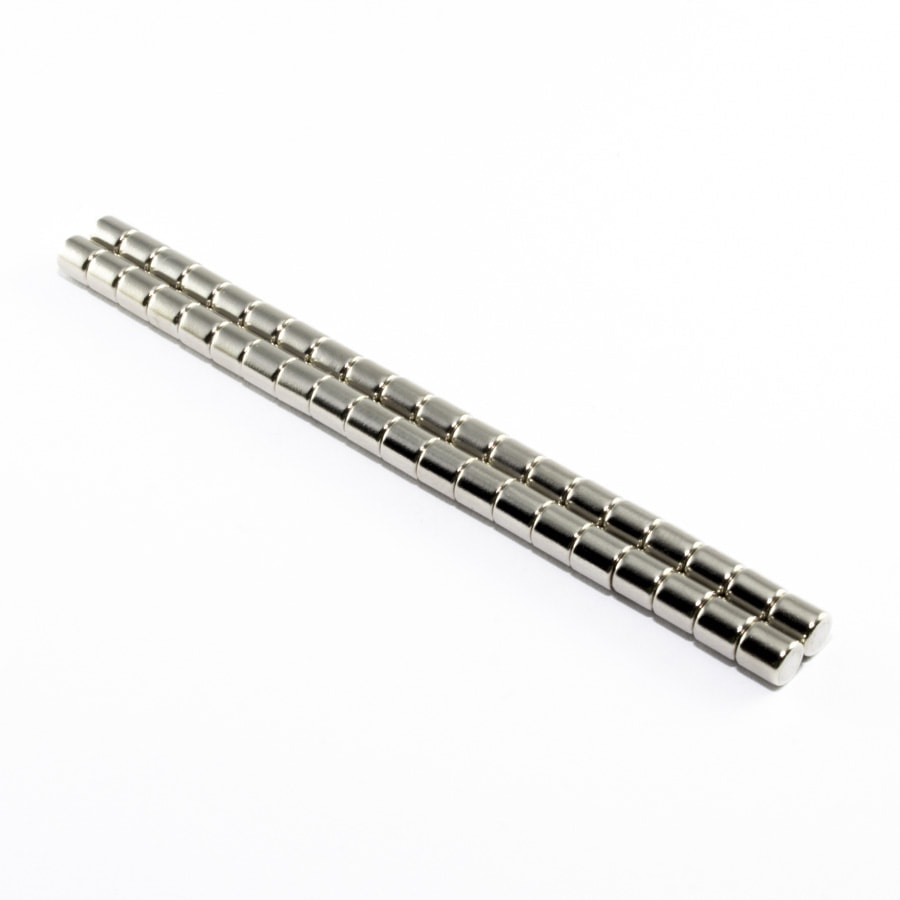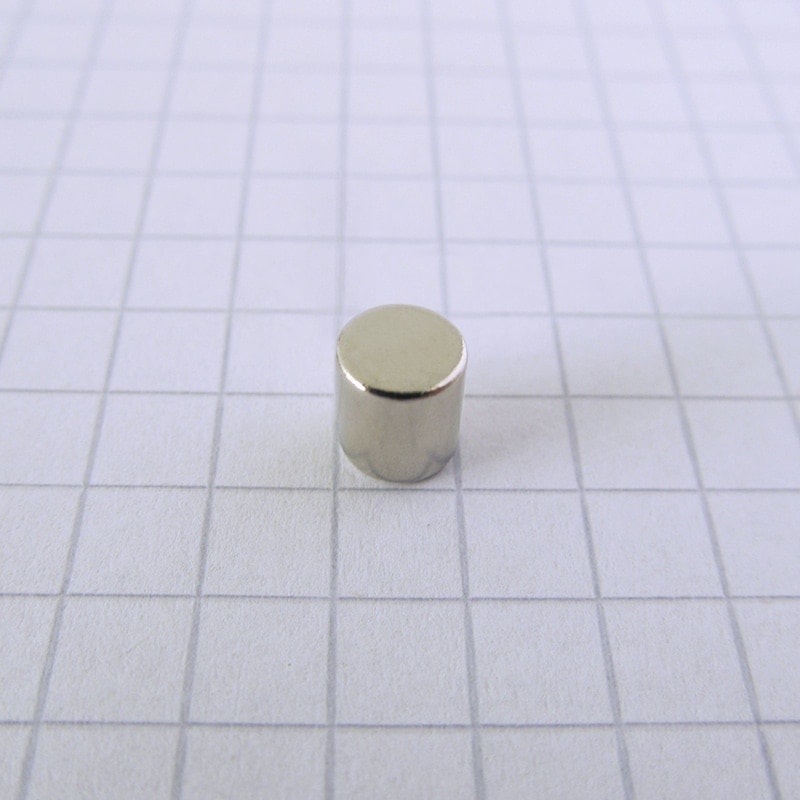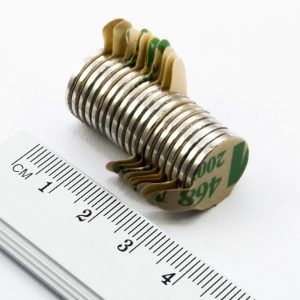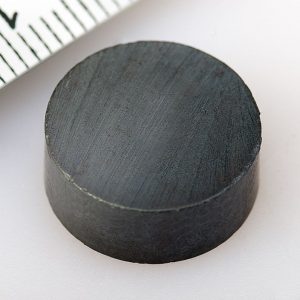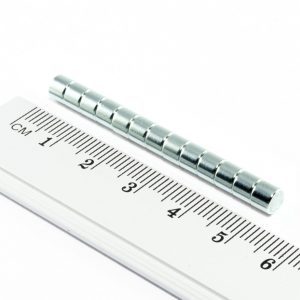Neodymium magnet, disc, 5×5 mm – N45
0,17€ inc. Vat
Quantity discounts
| From 1 pc: | 0,17€ |
| From 120 pcs: | 0,15€ |
| From 300 pcs: | 0,14€ |
| From 1000 pcs: | 0,13€ |
| From 3000 pcs: | Request a quote |
Properties
| Diameter | 5 mm |
|---|---|
| Height | 5 mm |
| Magnetic strength | 0,98 kg |
| Magnetisation direction | axial (parallel to height) |
| Material | NdFeB – N45 (neodymium magnet) |
| Surface | three layers: nickel-copper-nickel |
| Temperature resistance | up to 80 °C |
| Weight | 0,7 g |
Product description
The magnet is made of the world's strongest magnetic material NdFeB. This material is up to 10 times stronger than conventional ferrite magnets.
The table above shows the strength of the magnet. This is the force required to pull the magnet away from a thick steel surface under the following ideal conditions:
- The surface is made of pure steel and is at least half the thickness of the magnet itself.
- The magnet touches the surface with the entire surface.
- The magnet is pulled perpendicular to the surface (away from the surface).
- There is no gap between the magnet and the metal surface (e.g. paint coating).
In most cases, these conditions are not met and the strength tends to be several times lower. For more information, see the article What is the strength of a magnet in kg?
Magnetisation direction
The magnet is magnetised in the direction of the axis. This means that the poles of the magnet are located on the flat sides of the magnet.
If you put two magnets together with a flat side, they will either repel each other (same poles) or attract each other (opposite poles). Both sides of the magnet are attracted to objects made of iron, nickel, cobalt, steel or other ferromagnetic materials.
Surface treatment
There are three layers of protection on the surface of the magnet: nickel, copper and nickel again. If damaged, the magnet may begin to oxidise and gradually lose strength. If the magnet is likely to be subjected to shock or severe scratching, we recommend using our pot magnets. The steel pot protects the magnet from impacts and scratches.
The nickel-copper-nickel finish is not moisture resistant and is not suitable for outdoor use. We recommend our waterproof magnets for use outdoors or in humid environments.
High temperatures
Conventional neodymium magnets lose some of their strength when heated above 80 °C, and sometimes at lower temperatures. If you need a magnet with higher temperature resistance, see the category Magnets with high temperature resistance. The magnet is not affected by low temperatures.
Further information
For more information, see our FAQ page and our blog. You can calculate the pull-off force and magnetic field of any neodymium magnet with our magnetic calculator.
Do you need help?
Our magnet experts are available every working day. If you would like advice on your choice, please contact us at info@orodian.com or on +421 46 202 1200.
